Hallstatt salt mines or Salzwelten as it is called in German is one of the top attractions in the picturesque town of Hallstatt. The town’s history itself is linked quite heavily with the salt mining since time immemorial. In fact in early ages it was the salt deposits in this region that put this little town on the map. In fact, it was this “white gold” that dictated the prosperity of “Hallstatt culture”, one of Europe’s early civilizations.We were actually on the fence whether to visit the salt mines or just spend time in the town. I had never been to a salt mine before so i was a bit curious. The rainy weather in the morning tilted the balance in favor of Salzwelten. The weather forecast indicated that the sun might peek out in the afternoon. So we decided to explore the old town then.
Getting to Hallstatt Salt mines
We took the funicular up the mountain but it is also possible to hike up instead. If it wasn’t for the rain we would have definitely considered the later option. From the funicular station you still have to walk for about 10-15 minutes to get to the entrance of the salt mine. Along the way they have different excavations exhibited along with some audio and visual installations that give you a glimpse into the life in this region during the prehistoric and middle ages.
You can only do a guided tour in the salt mines. Once the tickets were bought, it was time to don the costume. Yes, they give you a sort of an overall to wear during your visit to the mines. We conveniently left all our belongings in the cloak room and set out to explore the salt mines. After quickly glancing through the exhibits in the ticket building we made our way to the mine entrance. With the costume and all, it almost felt as though we were going to work in the mine. We first walked through a tunnel and you could immediately see the salt and brine seeping through the rocks. The tunnel kept getting narrower and the air also felt humid and heavy. Along the way there were some old mining equipments displayed as well.
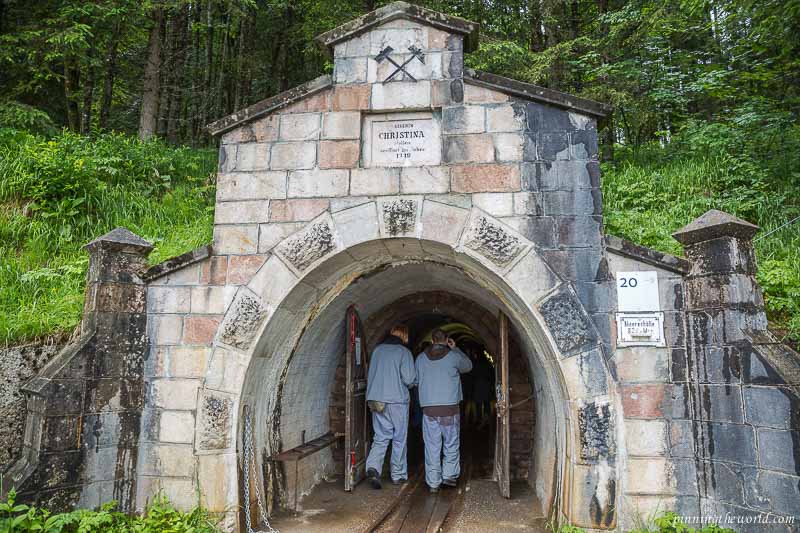
Entering the salt mine – Feels like we are gonna work there 🙂
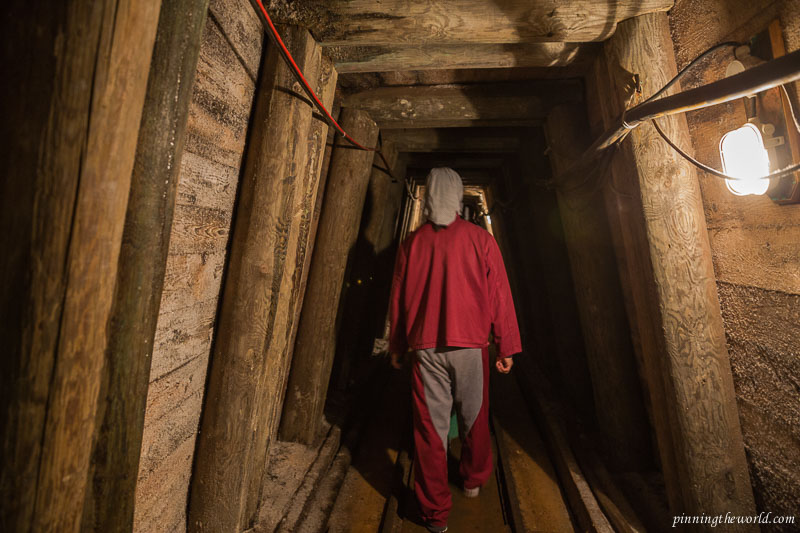
Christina tunnel gets narrower…

Some old equipment on display
Sliding down Hallstatt salt mines
Like many other mines, Hallstatt salt mines is also separated into different levels. As tourists we only get to see 2 levels. The most fun element of this mine is the way you get from one level to another. They have these wooden slides built between the levels and in the olden days that’s how the miners went down the levels. Talk about adding some fun to your daily work. Anyhow being honorary miners for the day we got to experience the same. The guide explained to us how to use the slide. Well, its no rocket science but you still have to take some precautions for your own safety and the safety of the fellow travellers. For instance, don’t try stop in between or don’t use your legs to stop yourself, chances are that you will flip over and fall. Similarly don’t start sliding down until the previous visitor has gotten off the slide and the green light is on. Yes, they do have signals similar to the traffic lights. You can also go in pairs if you want to enjoy it with your partner or are simply afraid of heights. And if you are terrified of using this or have a health condition then don’t you worry, there are stairs you can use instead. We decided to do one slide by our own and another one together just for the fun of it :). The first slide is the smaller one while the slide on the second level is relatively longer. On the second slide an automatic camera will also take a photo of you sliding down. You have the option to buy your picture from the store after you mine visit. To add some fun they also show you the speed at which you slide down and the comparison to the highest speed.
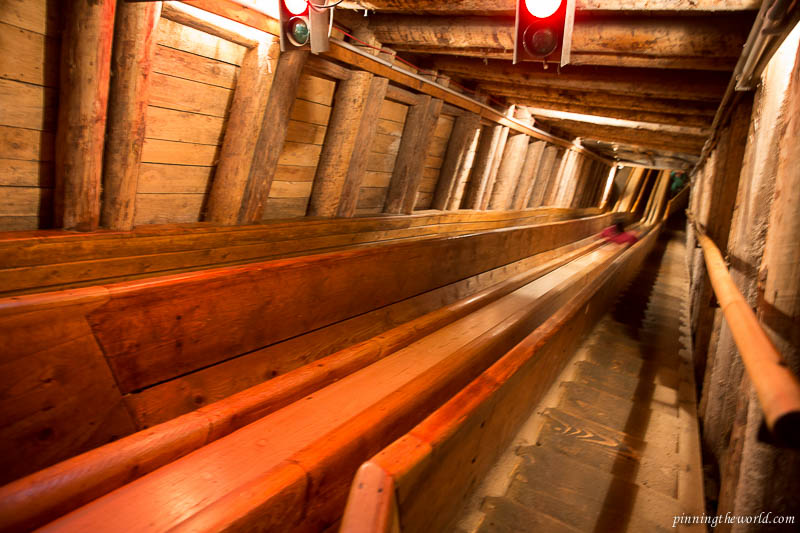
Wooden slides used by the miners in olden times
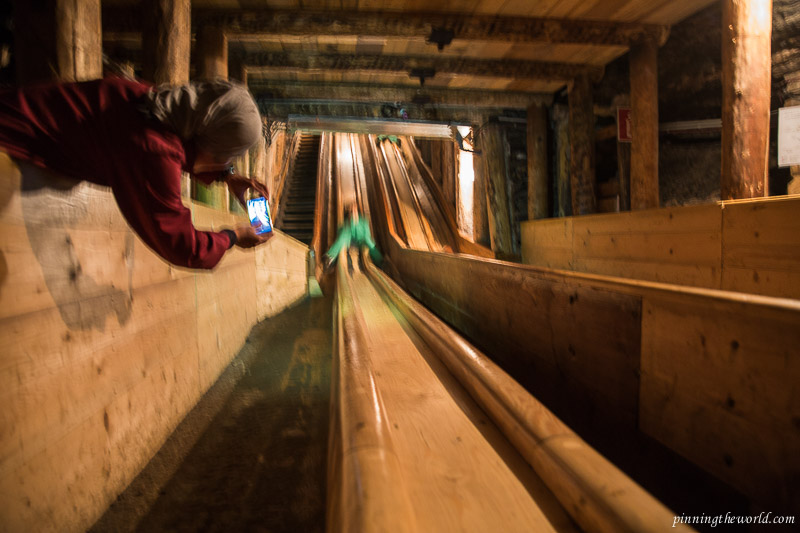
A very blurry me sliding away…
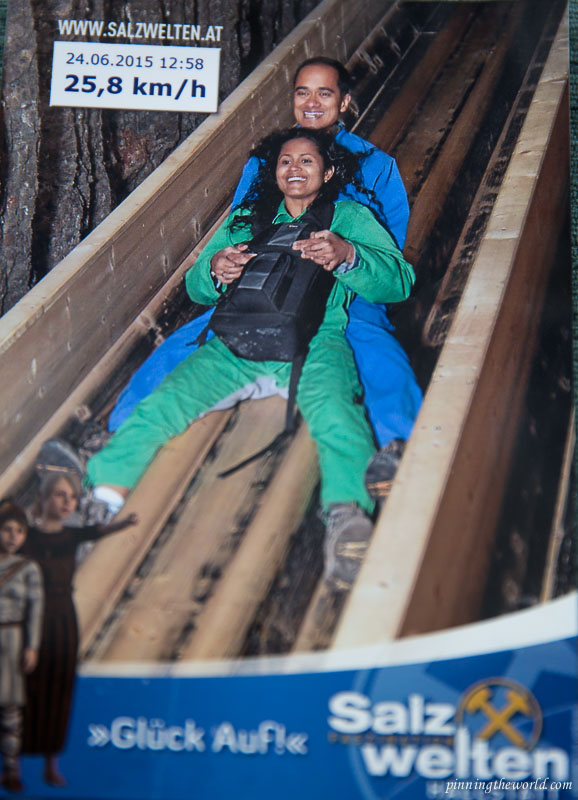
Woohoo – Sliding time again
Salt formation & History of mining
During our tour of the Hallstatt salt mines we learnt all about the salt formation in this region by the way of a multimedia light show in a large subterranean salt lake. The salt in the mines was formed by evaporation of sea water approximately 250 million years ago. This was subsequently followed by some tectonic activity and that has led to its present day form. One would wonder why go through the hassle of all the mining for salt when it is so freely available in the sea water. Sea water has about 3.5% salt concentration whereas the concentration in this region is upwards of 20% to 70%. We were told that this high concentration of salt makes all the mining cost still worthwhile.
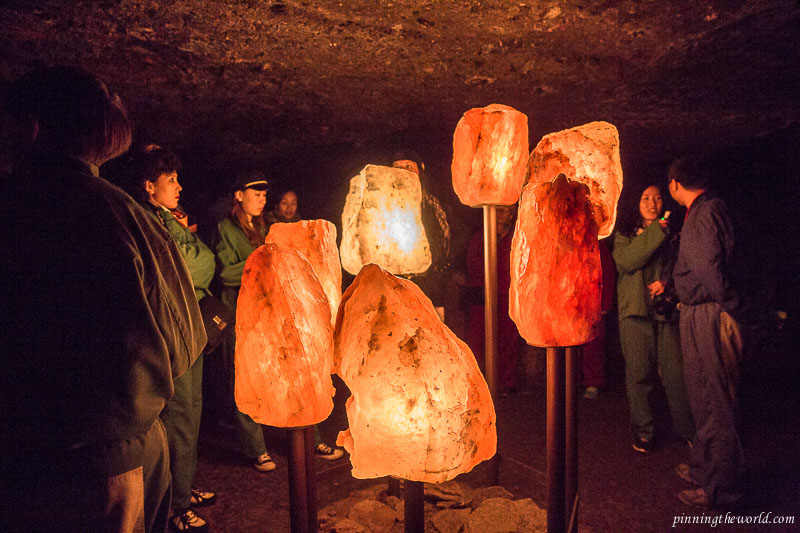
Giant salt crystals on display at Hallstatt salt mines
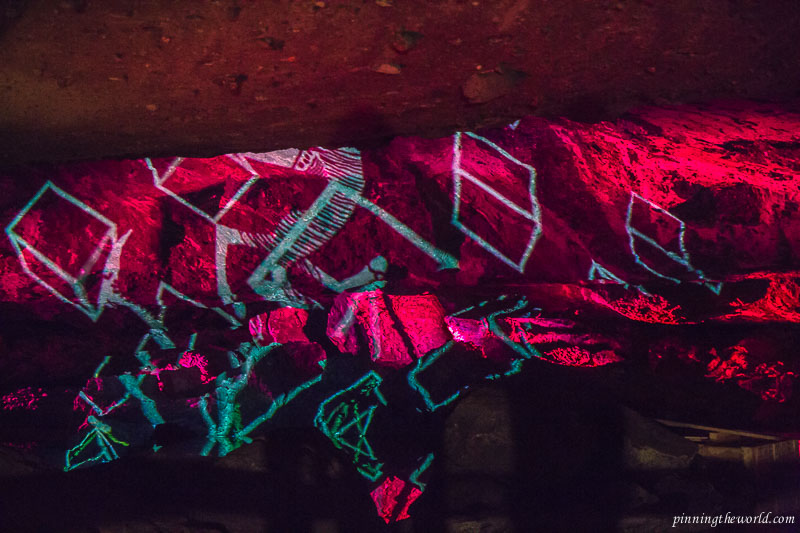
Understanding the history of salt formation
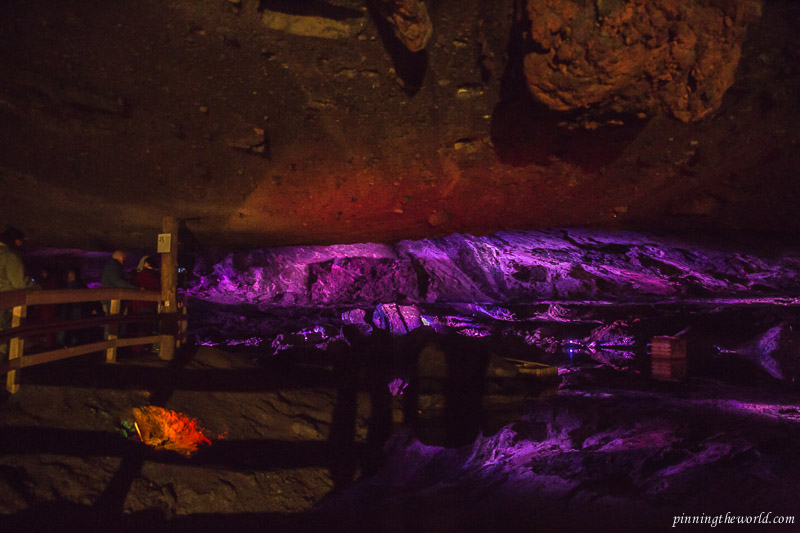
The subterranean brine lake where the multimedia show happens
It is believed that salt mining began in Hallstatt as early as 5000 BC. Since salt is an excellent preservative many of the early miner’s tools like pick axes, ladders etc have been found in this region and that has helped to a better understanding about the life of the miners in those ages. They have a film representing the same in the theater some 400 meters underground in the second level of the tour. There was even a miner’s body found in the mine completely preserved by the salt in 1734. The villagers believed he would have died in one mining accidents and being of Christian faith they gave him a burial. So sadly it was a lost opportunity for science but it is now believed that the “man in salt” was probably from around 1000BC. Even though you can’t see the “man in salt”, you can still see a very well preserved wooden staircase from circa 1344 BC. Back in the days these miners used to do some back breaking work and even children used to help them out in the mines. In the 1600’s there was a 40 km pipeline constructed to easily transport the brine from the mines to Ebensee for further processing. Needless to say that now the mine operates with the support of modern technology and some 40 miners.

Perfectly preserved old staircase found in the Hallstatt salt mines
We had reached the end our tour but there was still one fun element left. Our transport to the outside world was a miners train. It zipped through the tunnels and brought us back smiling into the daylight. On your way out you get a tiny salt shaker as a souvenir. Since i didn’t have any good pictures of us sliding down the miner’s slide in my camera we also decided to shell some euros to savour that memory. Then we made our way back to funicular station but with a small detour.

All aboard the train…
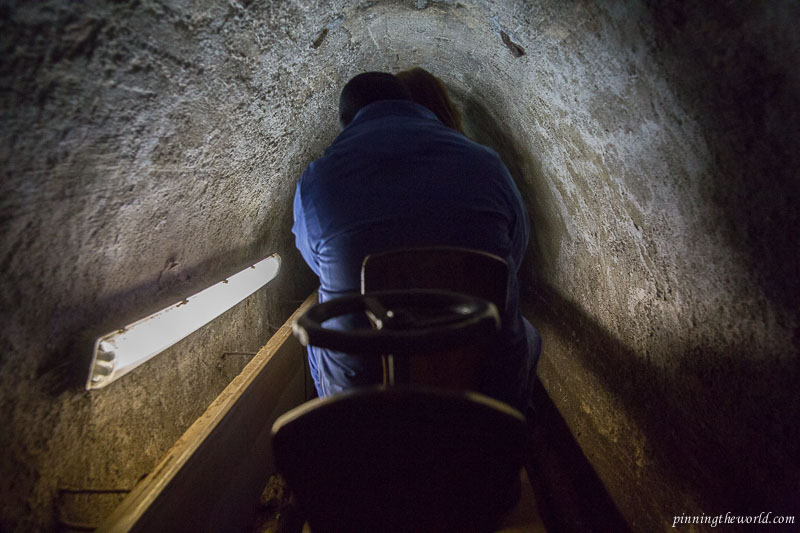
Here we go!

Back in the daylight : end of the tour
Hallstatt Skywalk & Rudolfsturm
There was this huge bridge which lead us to the pretty Rudolfstrum, a tower constructed for protecting the mine. But this serves as a nice scenic restaurant now. On the other side of the Rudolfstrum is the famous Hallstatt Skywalk which offers some breathtaking views of the Hallstatt lake and the massive Dachstein mountains surrounding it. We were quite tempted to have lunch at Rudolfstrum mainly for its view but a look at their menu made us decide otherwise. Well into our Austrian trip, we had been “schnitzelified” to the max by now and were craving something that was less meat heavy. Pizza or chinese was on top of our mind and with that thought we headed for the funicular and then straight to the non-touristy part of Hallstatt. Yes, the town does have one of those if you head away from the old town. Luckily we found a pizza place that we happily settled into.
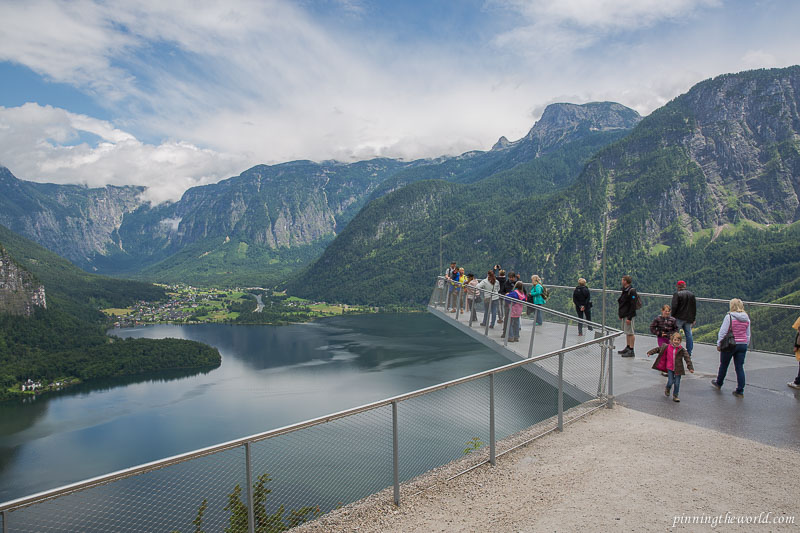
Hallstatt Skywalk
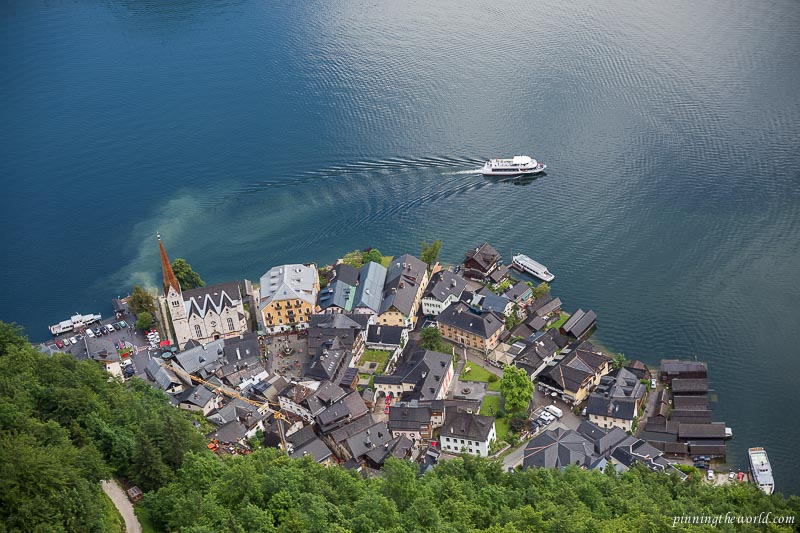
Old town of Hallstatt as seen from the skywalk
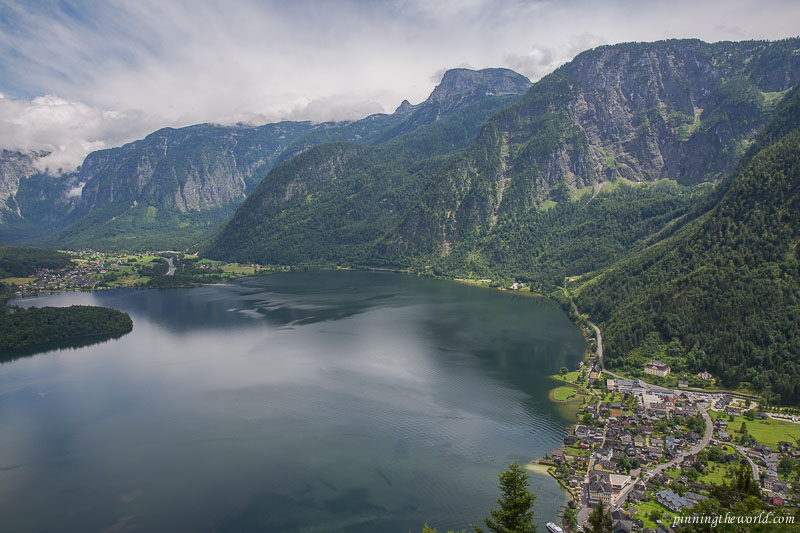
Pretty little towns nestled between the Dachstein mountains
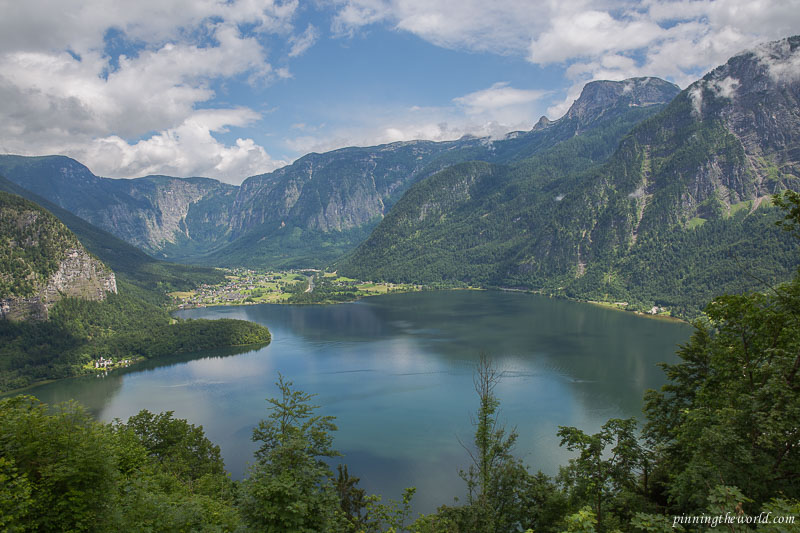
Couldn’t get enough of the Hallstatter lake and stunning scenery
Conclusion: To Visit or not to visit Hallstatt salt mines
Overall our visit was informative and fun but if you have already been to a salt mine before then there might not be anything new for you here, other than the fun elements like miner’s slides. In that case you might be better off spending your moolah elsewhere as this visit is by no means cheap. For me as well the most memorable part of the visit was the exhilarating slides down the mines and the miners train bringing us back to daylight.
Some practical tips for visiting Hallstatt salt mines:
- Check the opening times and the prices before you plan your trip.
- Ladies, you might want to skip the heels during this visit.
- Keep aside 3 hours for the entire trip including the funicular ride, walking etc.
- If you are going there by car, there is plenty of parking space a few minutes away from the funicular station
- They also have a cloak room so you can conveniently leave your stuff behind and go hands free to tour the mines
- Unfortunately place is not wheel chair friendly. But it is overall an easy and safe walk inside the mines. Could be fun and informative for kids!